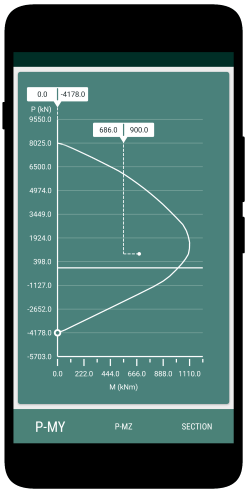A column subjected to uniaxial bending refers to a structural element that experiences bending about a single axis. In other words, the load or forces applied to the column act in only one direction, resulting in bending along that axis. This bending may be due to external loads or moments applied perpendicular to the longitudinal axis of the column.
Uniaxial bending can occur in various structural systems, such as buildings, bridges, or any other structure that includes columns. The magnitude of the bending moment depends on factors such as the applied loads, the geometry of the column, and the properties of the material used.
To analyze a column subjected to uniaxial bending, engineers consider both axial loads (compression or tension) and bending moments. The combined effect of these forces can lead to different failure modes.
In this blog, we delve into the of column design, exploring the steps involved in design of columns which is under uniaxial moment as per IS 456 : 2000.
Computation of Load on Column
Design the column, when it is necessary to provide the footing design before the slab and beam design, and when we have to assume the approx. column sizes.
$$ P_{u, floor} = P_{us} + P_{uw} + P_a $$
where, $ P_{us} $ = load transferred from slab to column at each floor level = $w_{us} \times A_{col}$
$ P_{uw} $ = wall load transferred to column at each floor level = $w_{uw} \times L_{w}$
$P_a$ = Load on column from above.
Calculation of Moments in Columns
Calculate the moment in the column using the following eqns as per the conditions,
$$M_e = \text{unbalanced fixed end moment at the joint} $$
$$ = \frac{w_u L^2}{12}, $$ if a single beam is rigidly connects to column on one side}
$$= (\frac{w_u1 L1^2}{12} – \frac{w_u2 L2^2}{12}), $$ if two beams with unequal loads or unequal spans are rigidly connected on opposite sides of the column.
$$M_e =
= \frac{w_u L^2}{24}, \text{if a single beam is simply in contact to column. } $$
$$= (\frac{w_u1 L1^2}{24} – \frac{w_u2 L2^2}{24}),$$ if two beams with unequal loads or unequal spans are connected on opposite sides of the column
Calculate the moment in column shall not be less then $ M_{ u.min} = P_u \times e_{ min}$, where $ e_{ min}$ is the min. eccentricity.
If the column is subjected to large bending moment M as compared to axial load P [say e/D =MI(PD) > 0.5), assume bars to be equally placed on opposite faces like a doubly reinforced section. On the contrary,if P is large compared to bending moment M(i.e. e/D=M/(PD)<0.5), assume bars to be uniformly placed all around the periphery.
In case of ambiguity of deciding the arrangement, calculate $A_{sc}$ from charts as explained below:
For bending about x-axis bisecting the depth of the column
- Calculate $P_u / (f_{ck}bD)$ and $M_u / (f_{ck} bD^2) $.
- Calculate d’/D where , d’ = effective cover
- Select appropriate chart corresponding to d’/D , grade of steel and distribution of reinforcement . Obtain point of intersection of $P_u / (f_{ck}bD)$ and $M_u / (f_{ck} bD^2) $.
- Interpoate the value of $p/f_{ck}$ where, $p=100A_{st}/(bD)$
- Calculate total area of steel required $A_s = f_{ck} \times (pbD/ 100)$
Note : For bending about y-axis bisecting the width of the column the chart to be referred to is having value of d’/b and use the expression $M_u/( f_{ck}b^2D)$. The rest of the procedure is the same as given above.
Conclusions
Designing column sections according to IS 456:2000 involves a systematic approach that ensures the structural integrity and safety of buildings. By following the steps outlined in this blog post, engineers can effectively determine the dimensions and reinforcement requirements for column sections.
Some of the key learnings are as follows:
- Understanding the Loads and Moments: Determining the factored loads and moments acting on the column is crucial for understanding the forces it will experience.
- Analysis for Section Selection: Analyzing the column for axial load and bending moments helps in selecting an appropriate section.
- Calculating Reinforcement Requirements: Calculating the required steel, considering allowable stresses, cover, and spacing, ensures the column can resist forces.
Column design
- RCC Column Design is a free app for designing reinforced concrete columns as per Indian Standards.
- RCC Design and detailing could be performed for uniaxial and biaxial bending conditions specified in IS456:2000
- Option to save the design projects in local storage.
- Detailed calculation steps presented for verification and validation.

This article was crafted by a group of experts at eigenplus to ensure it adheres to our strict quality standards. The individuals who contributed to this article are:
Author


